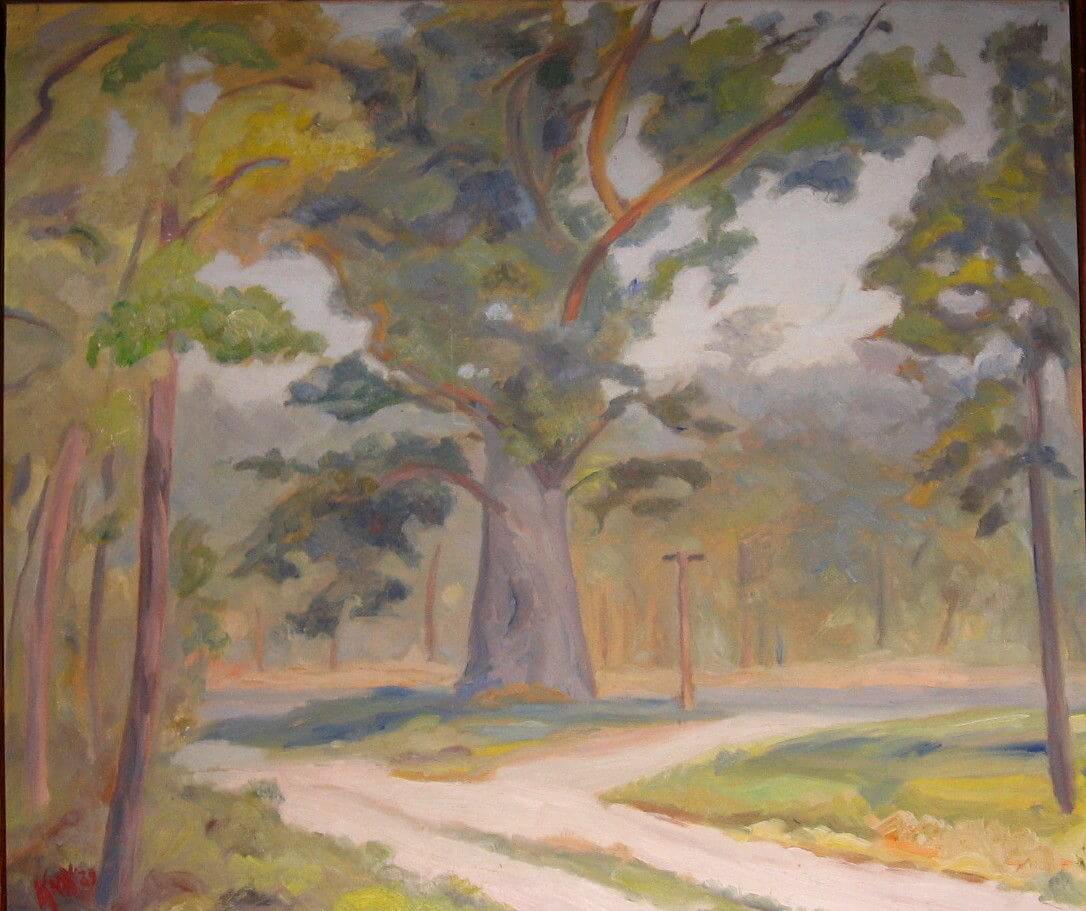It’s always an adventure when I set up to do appraisals at some local show, public venue or club meeting. I never know what I’m going to see. But some of the most fascinating things have been those items relating to local life, lore, and history.
For instance, a neighbor recently brought me a watercolor and a book of poetry, both created by the same local man—Ned Knox, a resident of the Pinelands in the 1930s.
Now it might be unfair, but to tell the truth, I just never associated “Piney” culture with fine art and verse. Neat crafts and good yarn spinning, maybe, but painting and poetry?
Knox’s hardcover book of children’s poetry, “So You May Find the Year,” was published in 1937. It is divided into sections named for holidays throughout the year.
Not all the poems in each section, however, are holiday specific.
In the “New Year’s Day” section, for instance, there is a poem called “Upside Down,” which starts this way: “Sometimes when I am in my bed/ I like to stand upon my head/ And look for things, just for a treat/ I never see when on my feet.”
The poems are all quite charming, but I was really intrigued by the watercolor. It featured a large, craggy old tree in a forest clearing crossed by dirt roads.
Knox signed and dated it 1939. On the back there were some old newspaper articles, including one with a photo of the old tree. The articles told the legend of Ong’s Hat, a Pinelands town in Burlington County, which can still be located on some state maps.
There are many towns in the Pinelands with unusual names: Mount Misery, Double Trouble, and others, all with their own story.
Ong’s Hat begins with the Ong family that lived in the Pinelands from around 1735 until sometime in the 1790s. The last of the family line was Jacob Ong, a happy-go-lucky dandy and womanizer.
Jacob was known to wear a fancy and expensive silk hat wherever he went—unusual headgear in those parts no doubt.
One story has it that Jacob, in his cups, danced himself silly one afternoon and tossed it up in the tree where it never came down. The other version is that he got a woman so angry she stomped on his hat and threw it in the tree.
Whichever is correct, the point is that this very distinctive hat stayed up in that tree for a very long time, so long in fact that it was used as a point of reference when giving directions through the woods: “Go left when you get to Ong’s hat.”
As a result, a crossroads was cut by the tree for those passing by, and eventually a town sprang up.
By the time Knox painted the tree, the place was already a ghost town. It still is today.
Some years ago, a couple of Jersey radio jokesters tried to hoax people into the idea that secret government experiments were happening there. To their credit, they kept the conspiracy theory going for a while until it was exposed. All very X-Files.
The other local item brought to me recently wasn’t so amusing, but it was a fascinating look into local life here about 100 year ago.
It was a wooden body yoke for bearing pails of water. The yoke was hand-carved to custom fit over the shoulders of a woman or a young boy. The original hand-woven rope was still attached, as were the polished, v-shaped limbs the pails hooked onto.
Handcrafted wooden household vessels and implements are called treen, and fall into the category of American primitives.
This yoke was not any ordinary household implement, but was probably meant for some farm or commercial task, such as water for animals, irrigation, water for canning.
Whatever it was, it made my shoulders ache just looking at it.
Animal yokes and other wooden farm implements have long been used in American country decor. As a decorative sculpture today, this human yoke would certainly make us thankful for indoor plumbing, and not be prone so much to complaining about our own daily grind.
I appraised the Knox painting and poetry book together at about $200, and the body yoke at $300-350. As examples of a regional culture to be proud of, however, they’re priceless.
—Arthur Schwerdt, a certified appraiser, is the author of “The Antique Story Book: Finding the Real Value of Old Things,” and co-owner of The August Farmhouse Antiques on Route 9 in Swainton. Send your comments, questions or appraisal requests to aschwerdt@cmcherald.com.







